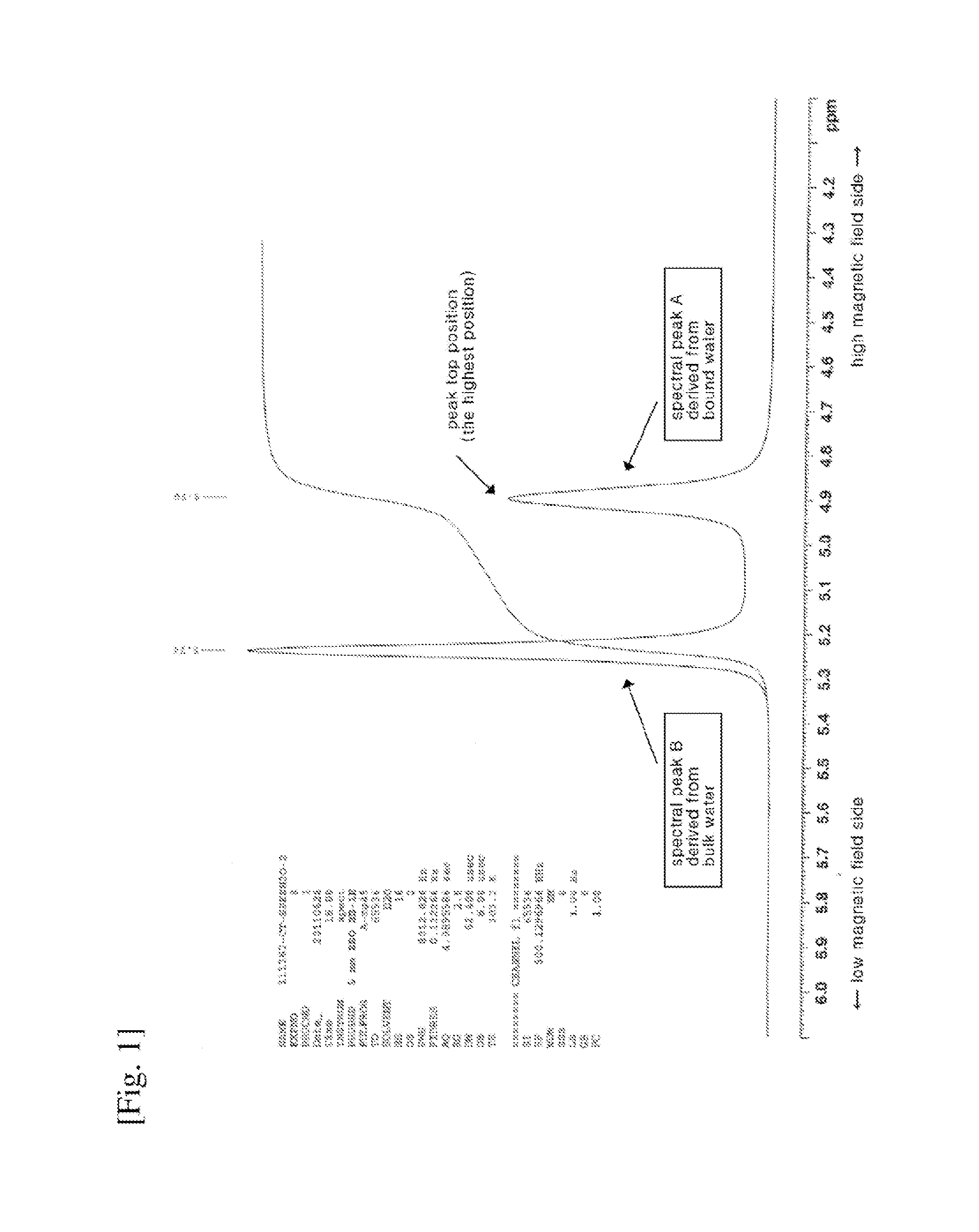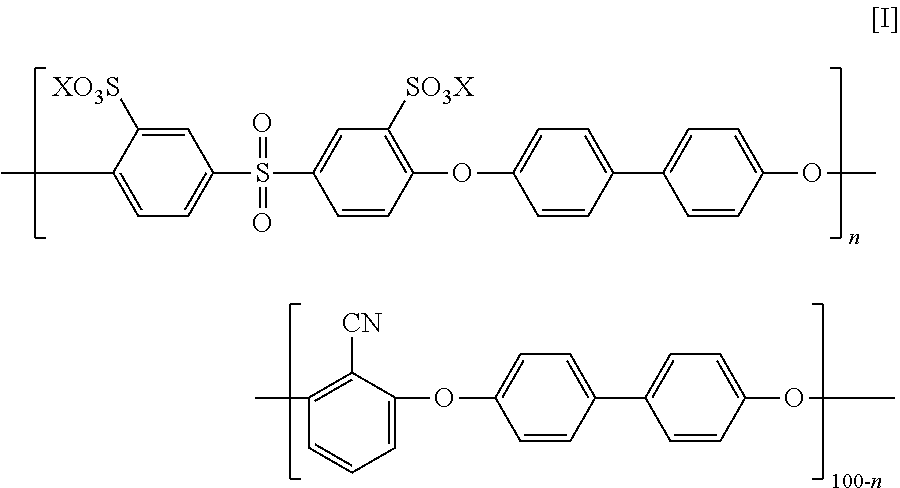Reverse osmosis membrane for wastewater treatment
- Summary
- Abstract
- Description
- Claims
- Application Information
AI Technical Summary
Benefits of technology
Problems solved by technology
Method used
Image
Examples
example 1
[0089]Sulfonated poly(aryl ether sulfone) type polymer (brevity code: SPN-23) obtained by polymerization of 11.5 mol % of 3,3′-disulfo-4,4′-dichlorodiphenylsulfone disodium salt (brevity code: S-DCDPS), 38.5 mol % of 2,6-dichlorobenzonitrile (brevity code: DCBN) and 50 mol % of 4,4′-biphenol was dried in advance at 110° C. for 12 hours. After that, 71.5 parts by weight thereof was weighed and then 123.2 parts by weight of N-methyl-2-pyrrolidone (brevity code: NMP) and 25.3 parts by weight of ethylene glycol (brevity code: EG) were poured into a separable flask followed by stirring at 170° C. for 3 hours to give a uniform polymer solution having the polymer concentration of 32.5% by weight.
[0090]This polymer solution was charged, as a dope, into a spinning device having a plunger-type extruding function. Temperature of the dope was kept at 150° C., and the dope was sent to a tube-in-orifice type nozzle and discharged at the rate of 0.24 g / minute from a dope extruding annular orifice ...
example 2
[0091]The hollow fiber membrane obtained in Example 1 was dipped into 10% by weight aqueous solution of lithium chloride for one night so that the counter cation (X) on the sulfonic acid group of the formula [I] was changed to lithium ion. Details of the membrane and the evaluated result are shown in Table 1.
example 3
[0092]The hollow fiber membrane obtained in Example 1 was dipped into 10% by weight aqueous solution of potassium chloride for one night so that the counter cation (X) on the sulfonic acid group of the formula [I] was changed to potassium ion. Details of the membrane and the evaluated result are shown in Table 1.
PUM
| Property | Measurement | Unit |
|---|---|---|
| Diameter | aaaaa | aaaaa |
| Diameter | aaaaa | aaaaa |
| Diameter | aaaaa | aaaaa |
Abstract
Description
Claims
Application Information
 Login to View More
Login to View More - R&D
- Intellectual Property
- Life Sciences
- Materials
- Tech Scout
- Unparalleled Data Quality
- Higher Quality Content
- 60% Fewer Hallucinations
Browse by: Latest US Patents, China's latest patents, Technical Efficacy Thesaurus, Application Domain, Technology Topic, Popular Technical Reports.
© 2025 PatSnap. All rights reserved.Legal|Privacy policy|Modern Slavery Act Transparency Statement|Sitemap|About US| Contact US: help@patsnap.com



